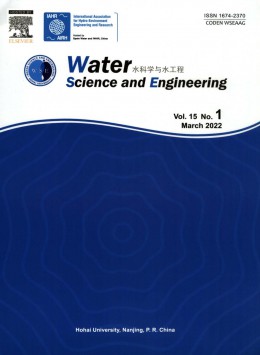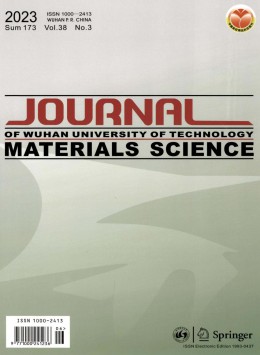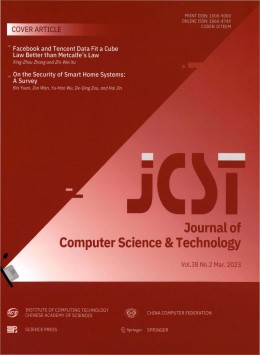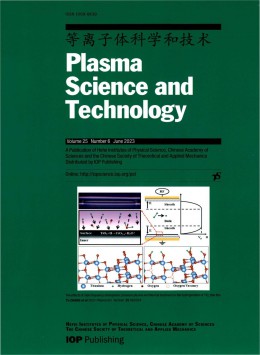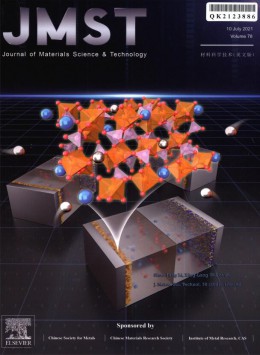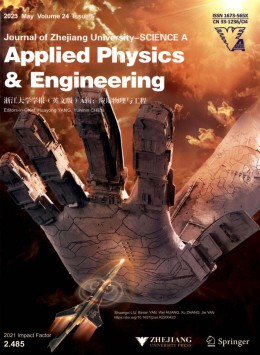Water Science and Engineering雜志
CSCD期刊統計源期刊Water Science and Engineering
同學科期刊級別分類 CSSCI南大期刊 北大期刊 CSCD期刊 統計源期刊 部級期刊 省級期刊
- 季刊 出版周期
- 32-1785/TV CN
- 1674-2370 ISSN
- 主管單位:中華人民共和國教育部
- 主辦單位:河海大學
- 創刊時間:2008
- 開本:B5
- 出版地:江蘇
- 語種:英語
- 審稿周期:1-3個月
- 影響因子:0.29
- 被引次數:33
- 數據庫收錄:
CSCD 中國科學引文數據庫來源期刊(含擴展版)、統計源期刊(中國科技論文優秀期刊)、知網收錄(中)、維普收錄(中)、萬方收錄(中)、EI 工程索引(美)、CA 化學文摘(美)、哥白尼索引(波蘭)、劍橋科學文摘、國家圖書館館藏、上海圖書館館藏、文摘與引文數據庫
Water Science and Engineering雜志簡介
《Water Science and Engineering》focuses on new concepts, theories, methods, and techniques related to water issues. The published papers cover the latestresearch in the fields of water resources, aquatic environment, water ecology, and water engineering, with emphases placed on the innovation and applicability of science and technology in large-scale hydropower project construction, large river and lake regulation, inter-basin water transfer, hydroelectric energy development, ecological restoration, the development of new materials, and sustainable utilization of water resources.
《Water Science and Engineering》aims to promote international exchange in academic research on water science, and to contribute to theinternationalization progress of Chinese water science as well as the solution of water-related issues.
The journal has an international editorial board consisting of well-known professors and experts in water science and engineering at prominent research institutes and universities around the world. The Editorial Board plays a leading role in guaranteeing high quality of the journal and improving the international influence of the journal.
By now,《Water Science and Engineering》has been accepted by Ei Compendex, Emerging Sources Citation Index, SciVerse Scopus, Chemical Abstracts, ProQuest-CSA, Index Copernicus, Chinese Science Citation Database, Chinese Science Abstracts, China Academic Journals Integrated Online Database, Wanfang Database of China, and VIP Database of China.
《Water Science and Engineering》was awarded the Distinctive Journal of the 1st English-Language Journals of Chinese University.
Water Science and Engineering雜志欄目設置
水科學研究、水工程建設、水資源保護、水生態修復、綜合述評、學術爭鳴
Water Science and Engineering雜志榮譽信息
Water Science and Engineering雜志訂閱方式
地址:1 Xikang Road, Nanjing 210024, P.R.China,郵編:210098。
Water Science and Engineering雜志社投稿須知
Requirements for Manuscripts:
1.The submitted manuscripts must be neither published nor under consideration for publication elsewhere.
2.The manuscripts should be written in concise and grammatical English.
3.The manuscripts should be arranged in Word format (paper size B5) with one column according to the paper template (including font, size, line space, etc.).
4.The paper should be organized in the following order: title, author(s), affiliation(s), abstract, key words, introduction, research contents, results, conclusions, acknowledgements, and references.
5.The title is preferred to be limited within 10 substantives. Only the initial of the first word needs to be capitalized, the others be lowercase letters (except proper nouns), and unusual abbreviations should be avoided.
6.Authors’ given names should come before surnames. The initials of given names and all the letters of surnames should be capitalized (e.g. John Quincy ABBOT). For Chinese authors’ names, a hyphen is necessary between two given names (e.g. Cheng-li ZHANG). There should be commas between authors’ names.
7.An abstract of more than 150 words (the title not repeated in the first sentence, and diagrams, formulas and references not included), which gives prominence to the creative ideas, the work’s purposes, methods, major findings, conclusions, etc., and key words (3 to 8 words) should be included in the manuscript.
8.The International System of Units (SI) should be adopted in the manuscript. All units in the text, figures, tables, and calculations should be used consistently.
9.All variables symbolized by single letters should be in italics; standard functions and letters symbolizing constants should be in normal style; and letters symbolizing vectors, tensors, and matrixes should be in bold italics. Each symbol that is presented in the paper for the first time should be defined. Foreign characters in capital form or lowercase form in the text and formulas should be distinguishable. Letters, numbers, and signs used as either superscripts or subscripts should be clearly identified.
10.Figures and tables with proper design should be placed right after where they’re referred to in the text. Each figure or table should have a corresponding title and be numbered consecutively. Three-line tables are required to be used. Iconographs should be drawn by computers in the format of TIF, JPG, or BMP for editing convenience. Variables in figures and tables should be in italics. Units of variables in normal style need to be put in parentheses, e.g. v (m/s).
11.If the paper is sponsored by a fund project or an important subject, please show its title at the bottom of the first page and put the serial number in subsequent parentheses.
12.The author-date system is required to be used for citations in the text and the reference list.
(1)Citations in the text: If an author’s name is cited in the text, the publication year in parenthesis should follow the name of the author, e.g. Stoker (1992). If the results, rather than the name of the author(s), are cited, a. use the author’s name(s) and the publication year(s) in parenthesis for the citation of a publication with two or less authors, e.g. (Stoker, 1992), (Lyn and Goodwin, 1987; Stoker, 1992); b. use the first author’s name followed by “et al.” for the citation of a publication with three or more authors, e.g. (Xie et al., 2004; Stoker, 1992); and c. use a lowercase letter like “a, b, c…” following the year to distinguish the works that are published during the same year by the same author e.g. (Zienkiewicz, 1995a, b, c).
(2)The reference list should consist of all published works referred to in the text, and arranged alphabetically by the authors’ names. All the authors of each reference should be listed. References include books, journals, theses, etc., which are published at home and abroad. The following reference formats are generally used:
1)Books
Strunk Jr., W., White, E.B., 2000. The Elements of Style, fourth ed. Longman, New York.Chen, S.Y., 1998. Engineering Fuzzy Set Theory and Application. National Defense Industry Press, Beijing (in Chinese).
Mettam, G.R., Adams, L.B., 2009. How to prepare an electronic version of your article. In: Jones, B.S., Smith, R.Z., eds., Introduction to the Electronic Age. E- Publishing Inc., New York, pp. 281–304.
2)Journals
Chopra, A.K., Chakrabarti, P., 1981. Earthquake analysis of concrete gravity dams including dam-water-foundation rock interaction. Earthquake Engineering and Structural Dynamics, 9 (4), 363–383.
3)Conference Proceedings and Symposiums
Berkhoff, J.C.W., 1972. Computation of combined refraction and diffraction. In: Proceedings of the 13th International Conference on Coastal Engineering, 745-747. ASCE, Vancouver.
Granger, R. J., 1997. Comparison of surface and satellite-derived estimates of evapotranspiration using a feedback algorithm. In: Kite, G.W., Pietroniro, A., Schultz, T.J., eds., Applications of Remote Sensing in Hydrology, Proceedings of the 3rd International Workshop NHRI Symposium. NASA Goddard Space Flight Center, Greenbelt, pp. 216–220.
4)Dissertations
Liu, C.J., 2004. Experimental Study on Unsteady Open-channel Flow and Bed-load Transport Properties. Ph. D. Dissertation. Tsinghua University, Beijing (in Chinese).
5)Others (standards, reports, electronic bulletins, newspapers, and patents)
Water Science and Engineering雜志數據信息
影響因子和被引次數
雜志發文量
Water Science and Engineering雜志發文分析
主要資助課題分析
| 資助課題 | 涉及文獻 |
| 國家重點基礎研究發展計劃(973Program) | 13 |
| 高等學校學科創新引智計劃(B08048) | 8 |
| 國家自然科學基金(90510017) | 5 |
| 國家自然科學基金(50539010) | 5 |
| 國家重點基礎研究發展計劃(2006CB400502) | 4 |
| 國家自然科學基金(50479017) | 4 |
| 國家重點基礎研究發展計劃(2010CB951101) | 3 |
| 國家自然科學基金(50879020) | 3 |
| 國家自然科學基金(51079024) | 3 |
| 國家自然科學基金(51139001) | 3 |
主要資助項目分析
| 資助項目 | 涉及文獻 |
| 國家自然科學基金 | 317 |
| 國家重點基礎研究發展計劃 | 38 |
| 高等學校學科創新引智計劃 | 15 |
| 中國博士后科學基金 | 9 |
| 國家教育部博士點基金 | 4 |
| 國家高技術研究發展計劃 | 3 |
| 湖北省自然科學基金 | 3 |
| 廣西壯族自治區自然科學基金 | 2 |
| 國家社會科學基金 | 2 |
| 霍英東教育基金 | 2 |
